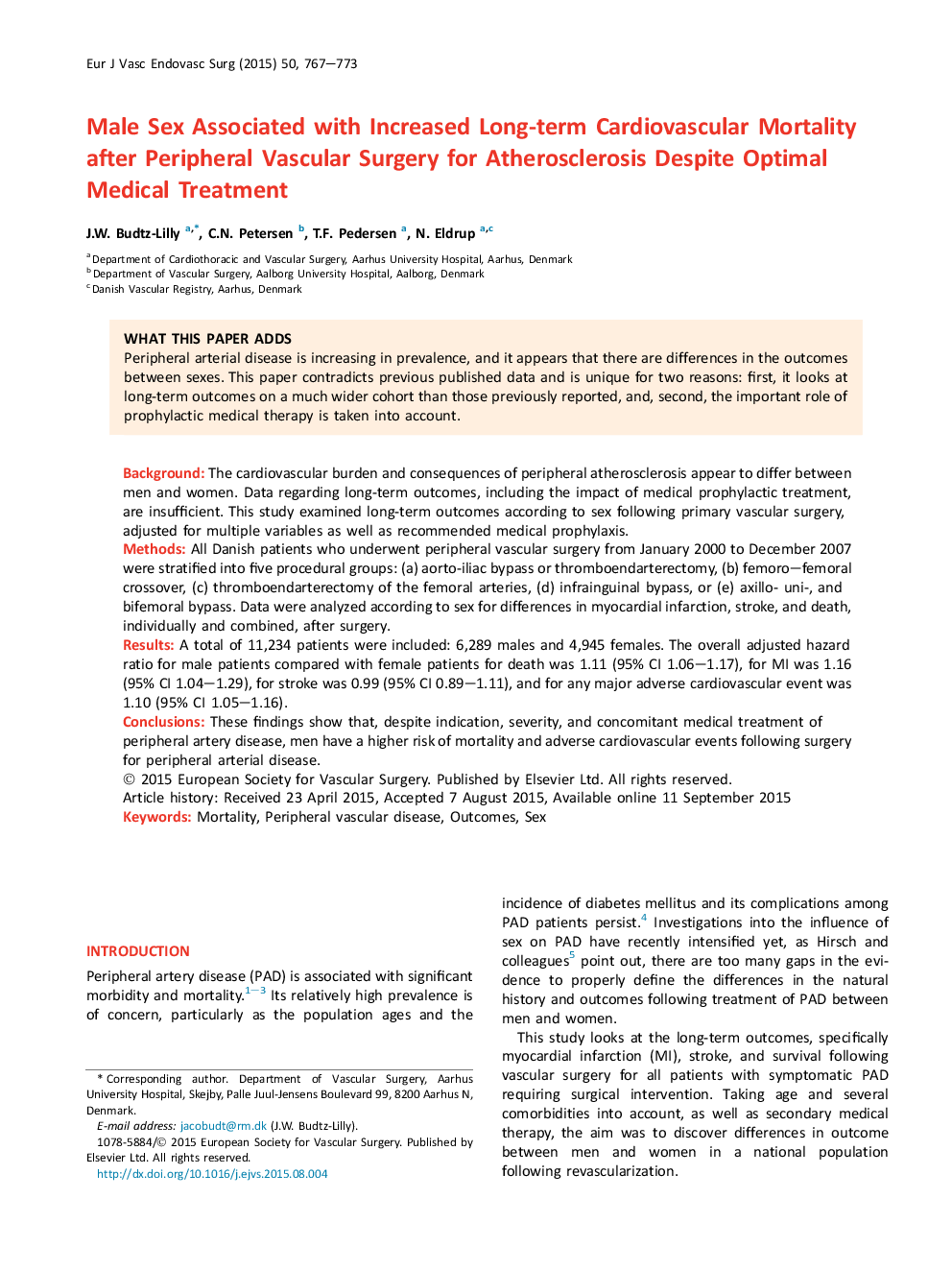| Article ID | Journal | Published Year | Pages | File Type |
|---|---|---|---|---|
| 5957430 | European Journal of Vascular and Endovascular Surgery | 2015 | 7 Pages |
BackgroundThe cardiovascular burden and consequences of peripheral atherosclerosis appear to differ between men and women. Data regarding long-term outcomes, including the impact of medical prophylactic treatment, are insufficient. This study examined long-term outcomes according to sex following primary vascular surgery, adjusted for multiple variables as well as recommended medical prophylaxis.MethodsAll Danish patients who underwent peripheral vascular surgery from January 2000 to December 2007 were stratified into five procedural groups: (a) aorto-iliac bypass or thromboendarterectomy, (b) femoro–femoral crossover, (c) thromboendarterectomy of the femoral arteries, (d) infrainguinal bypass, or (e) axillo- uni-, and bifemoral bypass. Data were analyzed according to sex for differences in myocardial infarction, stroke, and death, individually and combined, after surgery.ResultsA total of 11,234 patients were included: 6,289 males and 4,945 females. The overall adjusted hazard ratio for male patients compared with female patients for death was 1.11 (95% CI 1.06–1.17), for MI was 1.16 (95% CI 1.04–1.29), for stroke was 0.99 (95% CI 0.89–1.11), and for any major adverse cardiovascular event was 1.10 (95% CI 1.05–1.16).ConclusionsThese findings show that, despite indication, severity, and concomitant medical treatment of peripheral artery disease, men have a higher risk of mortality and adverse cardiovascular events following surgery for peripheral arterial disease.
